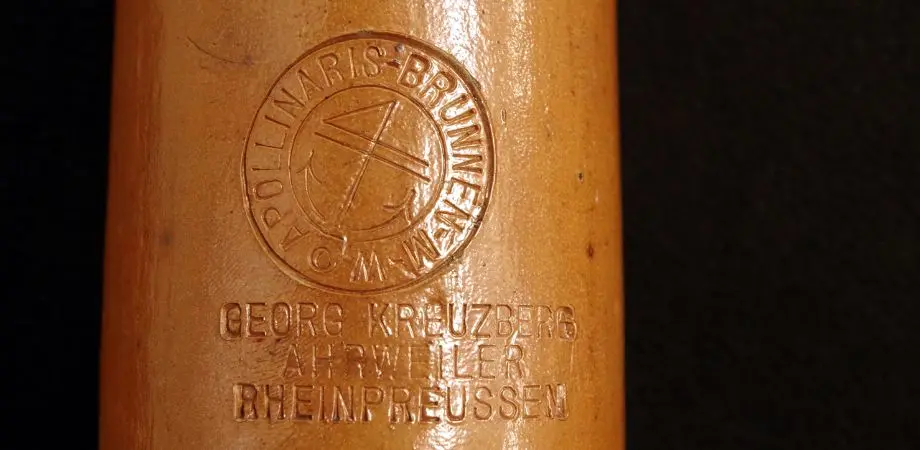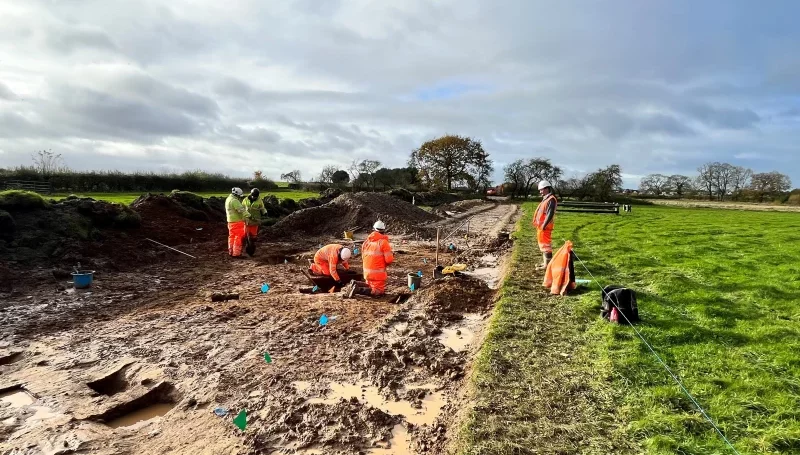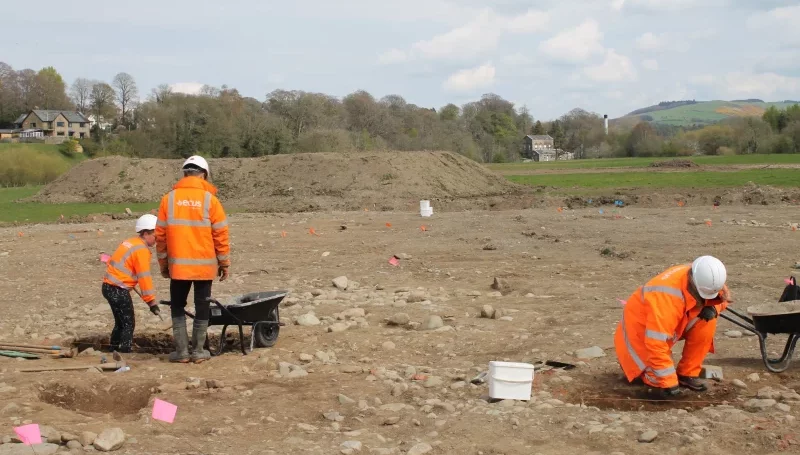It dates to the 19th century and has a circular stamp on the sidewall helping us to identify its source. The stamp shows a boat and anchor logo and reads ‘Apollinaris-Brunnen M-W’. Below we can also see it has the name; ‘Georg Kreuzberg Ahrweiler Rheinpreussen’.
Georg Kreuzberg was originally a wine merchant born in the Rhineland, Germany. After purchasing a vineyard in Bad Neuenahr, on which vines would not grow, Georg eventually discovered a spring of naturally sparkling mineral water. The high concentration of carbon dioxide in the soil was the reason for a poor vine growth; however, it produced perfect drinking water. The spring was named the ‘Apollinaris Fountain’, after St Apollinaris of Ravenna, the patron saint of wine. By 1852, a bottling plant was established at the spring, which produced mineral water that was shipped across Europe. The business developed quickly, and by 1913 around 40 million bottles were produced annually at the site, with most of them being exported all over the world. This bottle is just one example of how far the trade system of the 19th century expanded and shows a link between remote Garrigill and the Apollinaris Fountain site in Germany. Apollinaris water is still produced today under the Coca Cola company, and is still shipped all over the world.





